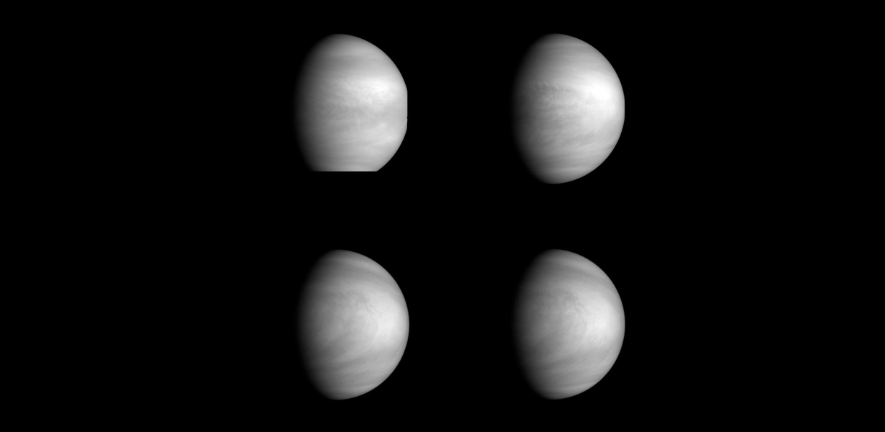Scientists may have solved a long-standing enigma by figuring out the missing element in the chemistry of the Venusian clouds that would account for their color and splotchiness in the UV spectrum.
 Multiple Views of Venus' High-level Clouds. Image Credit: NASA/JPL
Multiple Views of Venus' High-level Clouds. Image Credit: NASA/JPL
What material makes up Venus's clouds? Its primary composition is known to be sulfuric acid droplets with trace amounts of water, chlorine, and iron. Within the dense and inhospitable Venusian atmosphere, their concentrations change with altitude. However, they have not been able to find the missing element that would account for the clouds' streaks and patches, which are only visible in the ultraviolet spectrum.
Researchers from the University of Cambridge have synthesized iron-bearing sulfate crystals that can withstand the extreme chemical conditions seen in Venusian clouds, as reported in a recent paper published in Science Advances. The intriguing UV absorption signature of the neighboring planet can be explained by the combination of two minerals, rhomboclase, and acid ferric sulfate, according to a spectroscopic study.
The only available data for the composition of the clouds were collected by probes and revealed strange properties of the clouds that so far we have been unable to fully explain. In particular, when examined under UV light, the Venusian clouds featured a specific UV absorption pattern. What elements, compounds, or minerals are responsible for such observation?
Paul Rimmer, Study Co-Author, Cavendish Laboratory
The group created a number of iron-containing sulfate minerals in an aqueous geochemistry lab at the Department of Earth Sciences based on the chemistry of the Venusian atmosphere. The team reduced the candidate minerals to rhomboclase and acid ferric sulfate by suspending the synthesized materials in various sulfuric acid concentrations and observing the chemical and mineralogical changes.
The spectroscopic features of these minerals were then analyzed under light sources that were specifically made to resemble the spectrum of solar flares (Paul Rimmer and Samantha Thompson's FlareLab at the Cavendish Laboratory).
In an effort to replicate the even more extreme Venusian clouds, a photochemistry lab at Harvard contributed to the study by measuring the UV absorbance patterns of ferric iron in extremely acidic conditions. These kinds of cooperative projects are encouraged by the recently founded Origins Federation, of which the scientists are members.
The patterns and level of absorption shown by the combination of these two mineral phases are consistent with the dark UV patches observed in Venusian clouds; these targeted experiments revealed the intricate chemical network within the atmosphere and shed light on the elemental cycling on the Venusian surface.
Clancy Zhijian Jiang, Co-Author, Department of Earth Sciences, University of Cambridge
Rimmer said, “Venus is our nearest neighbor, but it remains a mystery. We will have a chance to learn much more about this planet in the coming years with future NASA and ESA missions set to explore its atmosphere, clouds, and surface. This study prepares the grounds for these future explorations.”
The study was funded by the Simons Foundation and the Origins Federation.
Journal Reference:
Clancy Zhijian Jiang., et al., (2024). Iron-sulfur chemistry can explain the ultraviolet absorber in the clouds of Venus. Science Advances. doi.org/10.1126/sciadv.adg8826.